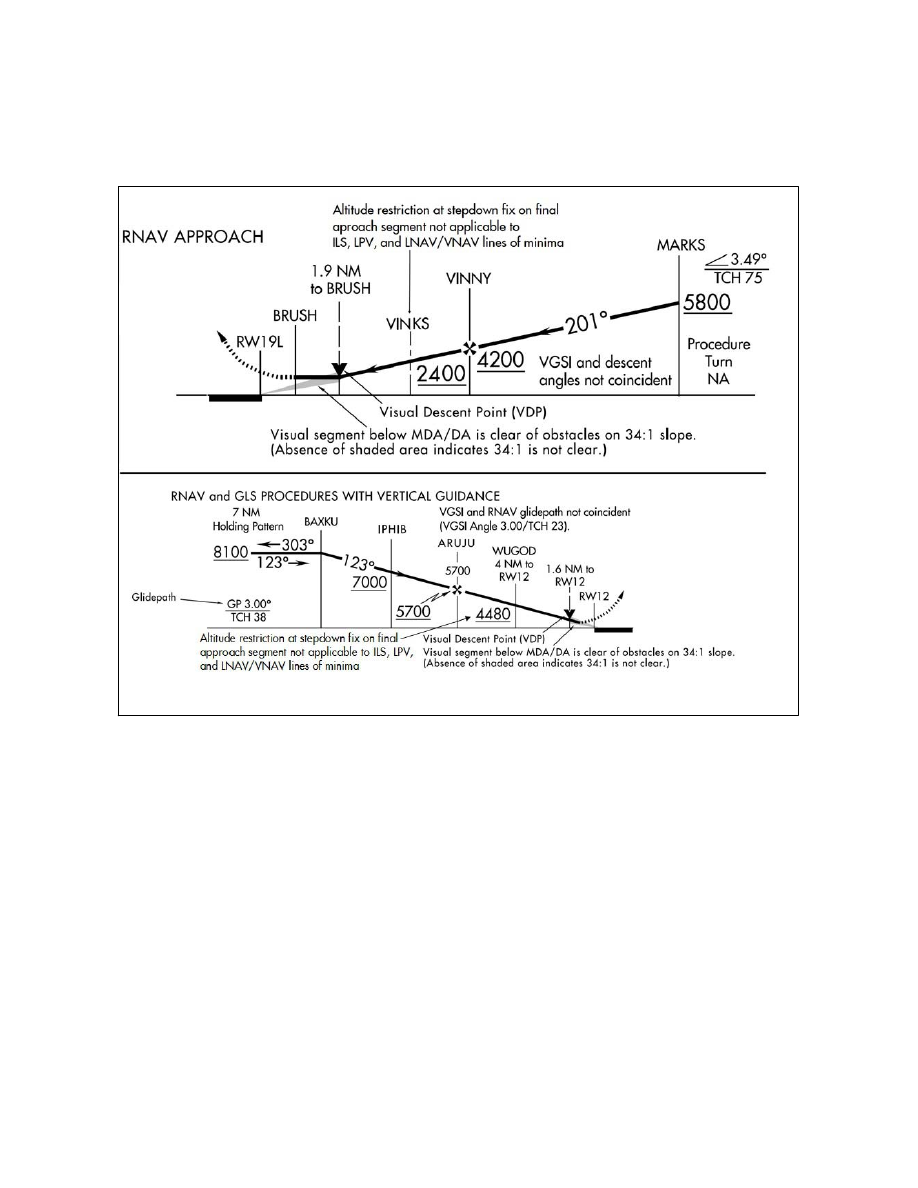
AIM
8/15/19
5
−
4
−
9
Arrival Procedures
FIG 5
−
4
−
1
Instrument Approach Procedure Stepdown Fixes
d. Terminal Arrival Area (TAA)
1.
The TAA provides a transition from the en
route structure to the terminal environment with little
required pilot/air traffic control interface for aircraft
equipped with Area Navigation (RNAV) systems. A
TAA provides minimum altitudes with standard
obstacle clearance when operating within the TAA
boundaries. TAAs are primarily used on RNAV
approaches but may be used on an ILS approach when
RNAV is the sole means for navigation to the IF;
however, they are not normally used in areas of heavy
concentration of air traffic.
2.
The basic design of the RNAV procedure
underlying the TAA is normally the “T” design (also
called the “Basic T”). The “T” design incorporates
two IAFs plus a dual purpose IF/IAF that functions as
both an intermediate fix and an initial approach fix.
The T configuration continues from the IF/IAF to the
final approach fix (FAF) and then to the missed
approach point (MAP). The two base leg IAFs are
typically aligned in a straight-line perpendicular to
the intermediate course connecting at the IF/IAF. A
Hold-in-Lieu-of Procedure Turn (HILPT) is
anchored at the IF/IAF and depicted on U.S.
Government publications using the “hold
−
in
−
lieu
−
of
−
PT” holding pattern symbol. When the HILPT is
necessary for course alignment and/or descent, the
dual purpose IF/IAF serves as an IAF during the entry
into the pattern. Following entry into the HILPT
pattern and when flying a route or sector labeled
“NoPT,” the dual-purpose fix serves as an IF, marking
the beginning of the Intermediate Segment. See
FIG 5
−
4
−
2 and FIG 5
−
4
−
3 for the Basic “T” TAA
configuration.